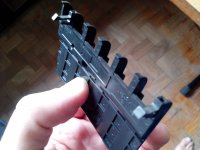- Joined
- Nov 27, 2010
- Messages
- 5,139
- Reaction score
- 5,022
- Points
- 373
- Location
- Copenhagen Denmark
- Printer Model
- Canon MP990
Yes, I will take care when working with these tough solvents and use both gloves and protective goggles. Getting solvent into your eyes is not a pleasant experience, I know from my work at a paint manufacturing plant.
I found a similar product from a Danish supplier: https://www.elfaelektronik.dk/elfa3~dk_en/elfa/init.do?item=80-795-36&toc=0 , I hope the product will be in stock in a couple of weeks. 1€ = 7.46 DKK
I have searched for revitalizing rubber rollers and seen the suggestion to use products intended for restoring grip in table tennis bats, so maybe a shop selling sports equipment also has something useful?
I found a similar product from a Danish supplier: https://www.elfaelektronik.dk/elfa3~dk_en/elfa/init.do?item=80-795-36&toc=0 , I hope the product will be in stock in a couple of weeks. 1€ = 7.46 DKK
I have searched for revitalizing rubber rollers and seen the suggestion to use products intended for restoring grip in table tennis bats, so maybe a shop selling sports equipment also has something useful?
Last edited:



